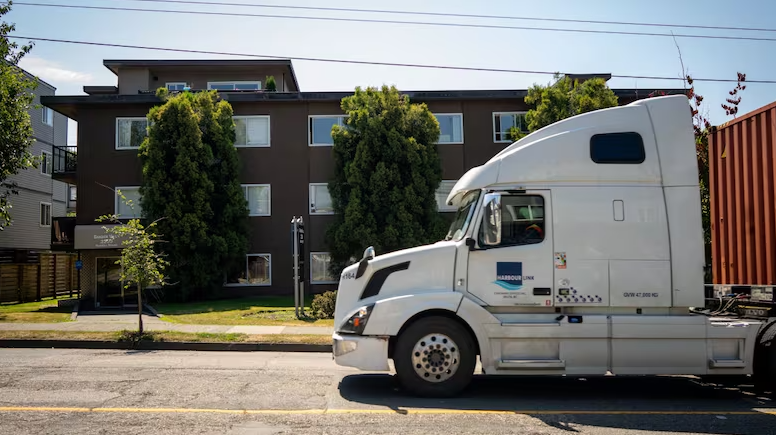East Vancouver Residents Decry Years-Long ‘Temporary’ Truck Detour Through Their Streets
Shraddha Tripathy
7/28/20251 min read


Residents of East Vancouver’s Hastings-Sunrise neighbourhood are voicing growing frustration over an ongoing detour that has rerouted noisy, exhaust-spewing container trucks through their residential streets for more than a decade — despite early assurances it would be temporary.
The detour began in 2010 when the Port of Vancouver closed the Clark Drive ramp, a key access point that previously allowed northbound trucks to bypass much of the neighbourhood via Commissioner Street. Residents say that since then, truck traffic has been funnelled along Powell, Dundas, Nanaimo, and McGill streets, directly past homes, schools, and parks.
“The trucks are blasting uphill, engines revving, windows shaking,” said resident Carlo Sombero. “It’s not just noise — we’re breathing in diesel pollution. It’s a daily health concern.”
His mother, Rosemarie Sombero, echoed the sense of betrayal felt by many in the community. “We were told this would be temporary. Thirteen years later, nothing has changed — we feel completely disregarded.”
Locals say safety is a growing concern. Michelle Brown-Colistro, who lives along Dundas Street, described witnessing a truck run a red light and a separate incident where a container truck crushed a small car. “There are families with young children here — we need real protection.”
In a statement, the Port of Vancouver said the Clark Drive entrance is no longer viable for modern trucking needs due to physical constraints and congestion caused by nearby rail crossings. The port maintains the current detour setup has improved overall traffic flow, emissions, and truck staging.
City officials say the issue remains under port authority control. Paul Storer, Vancouver’s director of transportation, noted that the Clark Drive entrance was briefly reopened between 2014 and 2019 but has since been closed again. He said the city is working with the port to explore alternatives, with updates expected in the fall.
Until then, residents may be stuck enduring the very conditions they were once told would be short-lived.
“We’ve been patient long enough,” said Carlo Sombero. “It’s time they listened to the people who actually live here.”
News
Stay updated with the latest BC news stories, subscribe to our newsletter today.
SUBSCRIBE
© 2025 Innovatory Labs Inc.. All rights reserved.
LINKS
